Harley Davidson Case Study
Question
Task:
Formulate an in-depth report on this Harley Davidson Case Study for the board members addressing the below-mentioned points:
• An overview of the different groups of consumers for Harley Davidson
• For every consumer group, a reflection about what you consider the best value proposition would be
• For each consumer group, a critique of their purchasing behaviour
• Suggestions for the marketing and appeals of a pricing structure, advertising strategy and distribution network to one of the groups described in previous parts
Answer
Executive Summary
The 3 M's for this Harley Davidson Case Study, would be management, manufacturing and marketing, enable the company to achieve commercial success and therefore achieve a massive customer base. The Harley Davidson Case Study aims to provide information about the vision and strategy of the business by which it wins the competition and also assesses the void left by the organization and sets out recommendations for accelerating growth.
Introduction
Harley Davidson is an American Motorcycle manufacturer. The company was founded in 1903 in Wisconsin, USA. The company has struggled during the Great Depression and, had survived the crisis along with another American Motorcycle manufacturer called Indian Motorcycles. During the years 1977 to 2014, Harley Davidson only focussed on and produced motorcycles that were designed for highway touring. The motorcycles were hence categorized as tourers and heavyweight engines having cylinder displacement ranging from 700 cubic centimetres (cc) to around 2000 cc (Pickett, 2008).
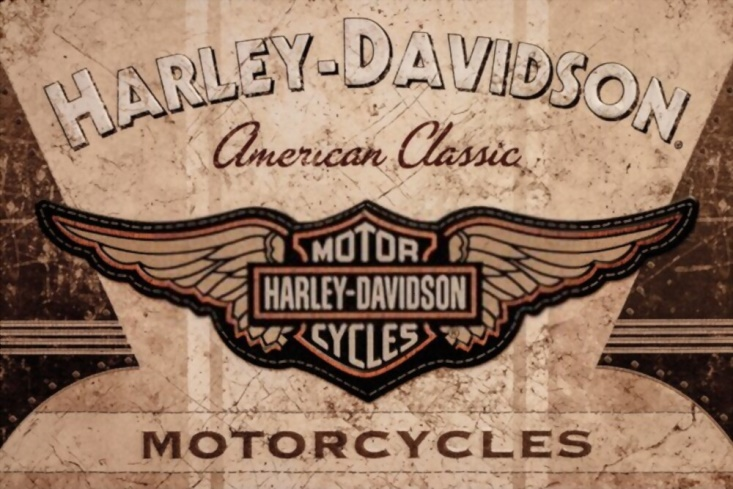
About the Harley Davidson Case Study
With the rising global economy, Harley Davidson is searching for ways to boost its customer base. A few excellent companies have also discovered how to defeat their competitors with the introduction of novel marketing and management, and also production techniques as tools. Harley-Davidson is also one of those outstanding businesses that are strained to deal with the marketing activities and battle with all of their industry rivals. The Harley Davidson Case Study aims to illustrate the company's attempt to cope with the competition through this research.
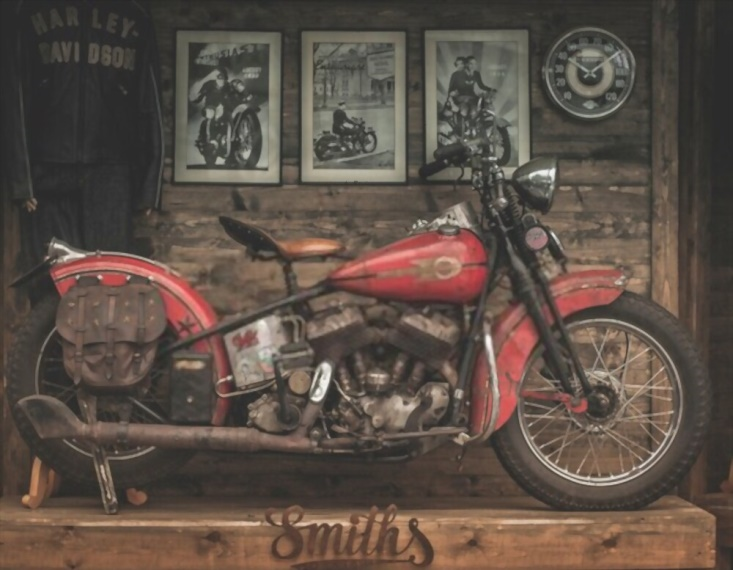
Targets and Objectives
The key objectives of this Harley Davidson case study are mentioned below:
- To better evaluate multiple groups of customers targeted for by the Harley Davidson Motorcycle Company
- To include relevant recommendations on the company's value proposition in each of the highlighted consumer groups
- To report observations relating to each consumer group’s purchasing behaviours
- To offer inputs on how the marketplace reacts and to provide an effective pricing approach and marketing strategy as well as an accurate distribution framework. (Schembri, 2009)
Discussion on Harley Davidson Case Study
While throughout World War 1 and 2, Harley Davidson was a very successful company, this position drastically changed mostly during 1970's. After the diversified acquisition, the majority shareholders of Harley Davidson realized that they were still expected to evaluate issues that went wrong to make appropriate changes. The administration established the following list after a thorough study, which applied direly to previously encountered issues:
- Company leadership focused more on short-term performance.
- Management seldom offers the workers an opportunity to be heard otherwise handed them responsibility for the performance of the product they developed (Oosterwal, 2010)
- Larger stock levels of components and parts increased the costs and decreased efficiency.
- Faith in fast solutions for issues, such as tossing computers and state-of-the-art machines to increase efficiency.
- A high break-even point that rendered Harley Davidson prone to erratic market volatility.
- As of the "it will not happen here" circumstance, the administration took notice extra late against the challenge of international competition.
Different consumer groups for Harley Davidson
As highlighted in this Harley Davidson case study, the company has maintained supremacy over several generations in the motorcycle industry. Japanese manufacturers entered the market in the 1970s with some very high-quality, lower-priced motorcycles. From 1973 to 1983, Harley's market dominance rose from about 77.5 per cent to approximately 23.3 per cent, alongside Honda holding 44 per cent of the market by 1983. Harley-Davidson was still unable to battle on pricing against the Japanese manufacturers of motorcycles, so it had also set some other market prices and improved efficiency. Around the same period, a huge transformation was also underway in the consumer base, which demanded consumer-oriented goods. On the basis of detailed feedback from customers, Harley also had to shift from the business model, which dictates what buyers should have towards the approaches (Pugliese & Cagan, 2002). Appropriate marketing approach has also been built on the basis of the desires and expectations of the consumer, obtained by focus groups, questionnaires and interviews.
Demographic- On the basis of age and sex Harley Davidson mainly targets men and individuals between the ages of 18-35. The Harley Davidson-Street was also first of the new channels that Harley has introduced in all its history; furthermore, this would help the company develop market penetration in different consumer portions. Harley-Davidson also has a roadmap to broaden its worldwide footprint to meet new audiences in the U.S. and global markets. A significant number of Harley's buyers mainly live in the U.S.; in addition, global retail revenues have also risen as a function of overall sales current (Pugliese & Cagan, 2002)
Geographic- As per this Harley Davidson case study, the company is currently introducing age-diverse and cross-cultural marketing strategies in the U.S. The effectiveness of this approach is assessed by actively tracking market position within the Core targeted demographic groups, young adults such as persons aged 18-34 years, women such as Caucasian women over 35 years, and also people of colour over 35 years of age such as African-American and Hispanic people (Teerlink & .Ozley, 2000).
Motorcycle registrations findings demonstrate that Harley-Davidson is currently the U.S. industry leader in on-road bike registration for heavyweight motorcycles that are above the 651cc mark, along with all other displacement registrations.
The consumer demographics to be targeted by Harley Davidson are:
- Young Adults
- Women
- Diverse Customers
- Core Customers
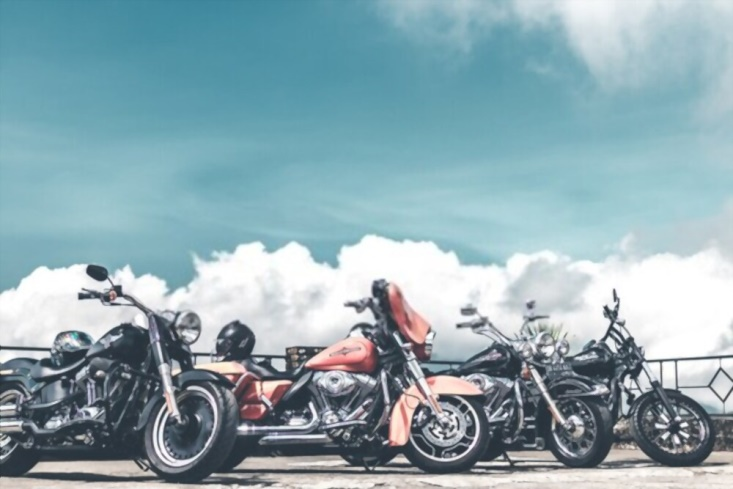
Value Proposition for each demographic:
The value proposition corresponds to an assurance of the commodity to be provided and accepted, with a consumer's expectation that perhaps the value will be provided as well as witnessed. This Harley Davidson Case study highlights proper value proposition which is extended to the whole company, and also to some of the other sections of it. A section of the company's market plan is also the development of a specific value proposition. On the basis of this Harley Davidson case study and analysis of business costs plus benefit, Harley generates a value proposition that the company offers to all its clients, likely clients, as well as other member groups inside and outside of the company (Chansler, Swamidass, & Cammann, 2003).
In essence, this Harley Davidson case study represents complete independence, equality and also uniqueness and self-expression, open road exploration, plus living life to the max. At plenty of points, an established design benefit is favourable than the moral benefits. Some personal animated advantages are definitely extra prominent for such companies. Thus it makes precise rationale to go beyond economic advantages and to also acknowledge the identity-expressive and cultural and intangible benefits as a foundation for the company's value proposition.
Geographic- U.S. consumers of Harley Davidson, regard the company as a premium brand and often believe that the company has greater value and that the company achieves what it pledges (Sapherstein, 1998)
Demographic- As per this Harley Davidson case study, the consumers between ages 18 to 34 believe the satisfaction and independence when driving to motorcycles of Harley Davidson and also feel comfortable and smooth.
The purchasing behaviour of each section
A very typical purchasing behaviour is demonstrated by Harley’s buyers. Essentially, the consumers are very loyal to the company and prefer to buy the product if they intend to buy a motorcycle. The brand creates deep loyalty since it is present in the hearts of the owners of Harley-Davidson. The followers of Harley are passionate bikers from all over the world who jump on their low riding Harleys, share motorbike experiences, and also wear T-shirts bearing the Harley logo that is actually pressing Harley than a Honda. Harley has rumbled its way to the top of the fast-manufacturing and everlasting motorcycle industry with extreme passion (Coutinho, Mesquita, & Muylder, 2018). Harley's "Hogs" also account for more than 1/5th of overall U.S. bike purchases and more than half of the heavyweight motorcycle market. In addition, both Harley's market shares as well as sales, are rising considerably. In fact, it is identified in this Harley Davidson case study that purchases have also far exceeded the production for several years of operation, with the consumer easily cataloguing up to 3 years for famous reproductions as well as retail rates that reach far above than the proposed catalogue prices. Harley Davidson advertisers often invest a considerable amount of time thinking about buyers as well as their spending patterns. The company, therefore, needs to consider who the genuine and probable buyers are and also how they really perceive and feel about the brand, plus the rationale behind why these people bought Harley and otherwise not a Honda Kawasaki or even a major American favourite, Honda. In order to determine the optimal route towards achieving all its business goals and objectives, there are some tough questions that the brand needs to address. In fact, these are complex questions; even the leadership of Harley itself does not really understand exactly what inspires all of their sales. But the administration of Harley also places the highest priority on knowing the clients as well as identifying things which make the clients proud and content.
In essence, Harley Davidson produces very strong and luxurious motorcycles, as well as striving to update all its dealerships and sales levers to cope with changing markets. But Harley customers buy more than just a top-notch motorcycle but also a pleasant offer in exchange. The Harley Davidson case study has carried adequate market research under which the company asked bikers to make the cut & paste art pieces of the images, which also conveyed all the emotions of the company about Harley Davidson, in order to ensure positive and accurate identification of the underlying reasons and preferences of the buyers. As the motorcycle provides them with what they want, the company will see a lot of dedicated motorcyclists purchasing the company's product (Catulli, M.Cook, & Potter, 2017).
Multiple reports have shown that Harley Davidson Inc. and its clients are now doing more than just buying a motorbike. The customers of Harley Davidson make an apt declaration of the way of life and also demonstrate a positive outlook. Purchasing a Harley, as experts believe, potentially tends to make people the 'strongest and toughest man on the road'. Harley rekindles the passions and declares the customers' freedom. Harley's official website home page literally declares the "Harley-Davidson Thumbing starter does more than the fire up the cylinders. It fires up true imagination."
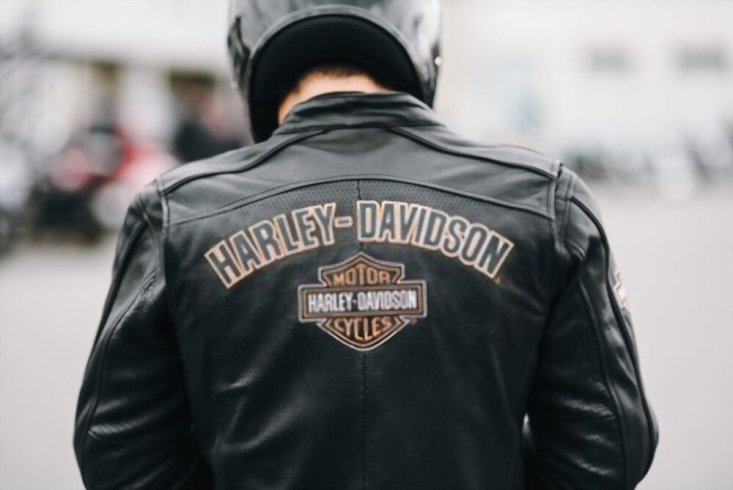
The demographic group is very loyal to the brand and generally continues to choose Harley motorcycles each time they go out to buy a new motorbike, and the company also ensures these customers feel exceptionally happy and contentious when they are using the motorcycle (Roese & Kompella, 2017).
The authentic and iconic appearance and throaty engine sound add to its appeal. Possessing one such American phenomenon also makes the owners a part of something better and greater, and makes them proud to be part of the Harley community as well. The fact that clients have to wait to get a Harley motorcycle also makes it especially fun to ride one. In reality, the firm purposely limits all its production. And the company's objectives and priorities are to fully run manufacturing at all the everlasting stages. In a recent Harley-Davidson campaign, such enormous and influential sentiments and motives are also depicted ( (Triwastuti, 2017)
Recommendations
In order to improve effectiveness and gain greater market share, there are plenty of recommendations that must be presented to the company. In reality, advertising incentives consists of 4 Ps that are product, place, price and promotion. Several other triggers also involve critical factors and activities in the ecology of the buyer: economic, technical, political and cultural. All such factors reach buyer's black box, at the point where they also are transformed in a certain number of different measurable buying choices, and distributor choice as well as purchasing scheduling, and a number of units purchased.
Promotion
HOG events are the main promotional strategies and methods for Harley motorcycles. The business not only functions as a platform for consumer relationships but also as a way to highlight and demonstrate innovative goods. In the eyes of people, Harley needs to create a really remarkable impact. It is highlighted in this Harley Davidson case study that the company should try to establish a brand name licencing scheme within a year which would include all its sales to the distributors and manufacturing facility at the time of extending the entire Harley experience in exchange. The company's programme could also put a stop to the illegal sale of Harley Davidson products and the coveted promotions offered (Guillotin & Kwon, 2018).
Product
In the heavyweight segment, Harley has to identify its leverage and examine its vulnerabilities. They even need to recognize and better leverage their entire mini niche areas where they get to penetrate the market and attract clients to achieve maximum commercial success. In order for Harley to become a well-known and respected brand in all groups, such as the working class, the company should now aim to gain more market penetration by creating motorcycles for the middle-income individuals. The company can also help to grow its market position with some personalized products and touring plus recreational street bikes. In an attempt to draw the young people and enter the category appropriately, the company can also introduce different colour options for the bikes. The brand will put in a few new bicycle designs with the goal of making the public aware of something innovative and special and one that reaches both their heart and souls. As Harley has often evolved mostly around its trademark image, certain innovative ideas can be introduced or established to ensure that the product is not only a better quality element of machinery but also glamorous.
Pricing
It is identified from this Harley Davidson case study that the company should understand its competition thoroughly and immediately as well as the markets. It also must attempt to capture the market and gain market share by offering a value which would assist the company to achieve greater consumer value and thus remain on the market for extended periods of time, as well as giving the companies leaving the industry a decent stiff competition (Grant, 2018). For this, the company will reduce its price by manufacturing greater and greater goods and increasing operational efficiency and therefore trying to deliver more motorcycles with lower prices to the consumer, which will also draw some other areas of the economy and thus allow the company to increase its profitability.
Distribution
The supply of motorcycles by the company should be even more intensive, allowing the company to gain a higher market share. It must focus on improving and creating a better distribution network whereby consumers will be happy to wait for the motorcycles they have bought and therefore the consumers would be directly be driven to the company, and this will allow the company to increase the sense of value that people have in view about the company's products and services. In reality, Harley buyers have to wait a very long time for the motorcycles they requested, so the company needs to focus on it and start taking appropriate steps in this regard so that the company can fill this void by improving its distribution network and concentrating on the establishing new stores.
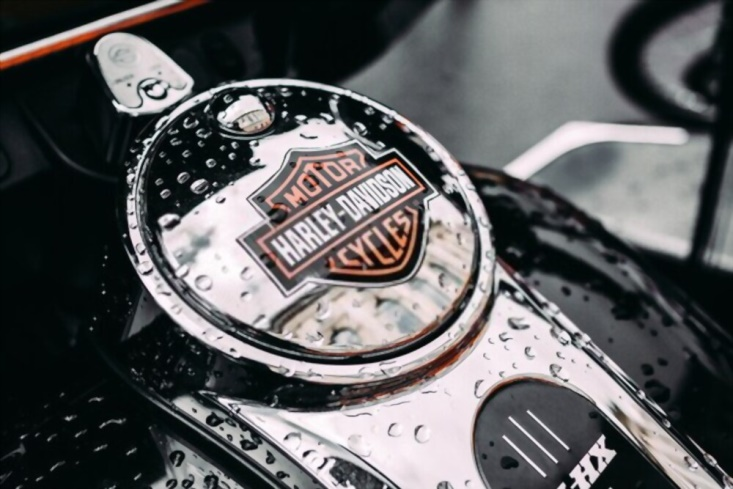
Conclusion:
In this Harley Davidson case study it was found that the brand leadership, better relations and improved efficiency, and also customer relationship management and engagement in effective promotional behaviour, really aren't simply phrases. Instead, the company properly attracts numerous consumers by following all such tactics and initiatives and is capable of creating customer loyalty and brand management is achieved correctly by the company. The company needs to expand in a certain area, and then it should implement some measures to strengthen its capacity and fill the space that has a negative effect on the company.
References
Catulli, M., M.Cook, & Potter, S. (2017). Product service systems users and Harley Davidson riders: The importance of consumer identity in the diffusion of sustainable consumption solutions. Journal of Industrial Ecology, 21(5), 1370-1379.
Chansler, P., Swamidass, P., & Cammann, C. (2003). Self-managing work teams: An empirical study of group cohesiveness in “natural work groups” at a Harley-Davidson Motor Company plant. Small group research, 34(1), 101-120.
Coutinho, M., Mesquita, J. d., & Muylder, C. d. (2018). Ultimate loyalty: A case study of Harley-Davidson clients. Revista Pensamento Contemporâneo em Administração, 12(3), 143-154.
Grant, R. (2018). Harley Davidson: creating experience from strategy. The Business & Management Collection.
Guillotin, B., & Kwon, S. (2018). Harley-Davidson: Internationalization in the Trump Era. Guillotin, B., & Kwon, S.(2018). Harley-Davidson: Internationalization in the Trump Era. Ivey Publishing (London, ON, Canada)[Case Study].
Oosterwal, D. (2010). The lean machine: how Harley-Davidson drove top-line growth and profitability with revolutionary lean product development. Amacom.
Pickett, M. (2008). Sustainable growth modeling: A longitudinal analysis of Harley-Davidson Inc. ASBBS e-journal, 4(1), 171-176.
Pugliese, M., & Cagan, J. (2002). Capturing a rebel: modeling the Harley-Davidson brand through a motorcycle shape grammar. Research in Engineering Design, 13(3), 139-156.
Roese, N., & Kompella, M. (2017). Harley-davidson: Chasing a new generation of customers. Kellogg School of Management Cases.
Sapherstein, M. (1998). The trademark registrability of the Harley-Davidson roar: A multimedia analysis. B.C. Intell. Prop. & Tech. F, 101101, 1998.
Schembri, S. (2009). Reframing brand experience: The experiential meaning of Harley–Davidson. Journal of Business Research, 62(12), 1299-1310.
Teerlink, R., & .Ozley, L. (2000). More than a motorcycle: The leadership journey at Harley-Davidson. Harvard Business Review Press.
Triwastuti, R. (2017). Market Entry Strategy of Multinational Enterprise (MNE): A Case Study of Harley Davidson. TIJAB (The International Journal of Applied Business), 1(2), 113-123.












